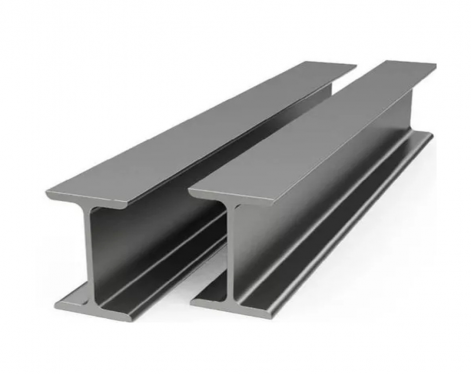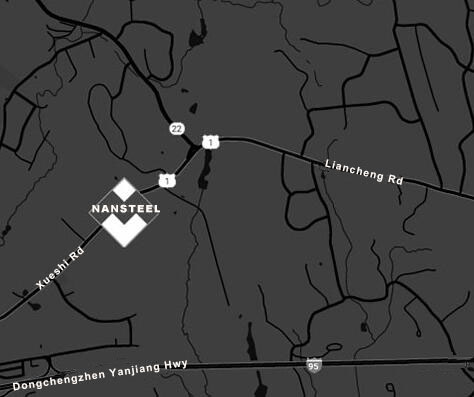When discussing the topic of H-shaped steel plate, it is essential to cover its specifications, materials, manufacturing process, tolerance standards, and typical applications. With these key areas addressed, engineers and procurement teams can make informed decisions when selecting structural steel components.
Definitions and overview
The term H-shaped steel plate refers to structural steel sections whose cross-section resembles the letter “H”. These profiles consist of two wide, flat flanges connected by a vertical web. The design yields high load-bearing capacity and strong bending resistance. For example, one description of H-shaped steel states that it “is a hot-rolled or welded structural steel with an ‘H’-shaped cross-section, characterized by wide flanges and a thin web”.
This geometry allows the material to deliver high efficiency in structural framing, especially where large spans or heavy loads are involved.
In the Chinese national standard context, profiles of this kind might fall under standards such as GB/T 11263‑2017 for hot-rolled H-shaped steel and split T-shaped steel.
This geometry allows the material to deliver high efficiency in structural framing, especially where large spans or heavy loads are involved.
In the Chinese national standard context, profiles of this kind might fall under standards such as GB/T 11263‑2017 for hot-rolled H-shaped steel and split T-shaped steel.
H-shaped steel plate Specification parameters
To understand H-shaped steel plates properly, here are the typical specification parameters you should consider:
Height (H): The vertical dimension of the section from top flange to bottom flange. For instance, heights from 100 mm up to 900 mm are commonly offered.
Flange width (B): The width of each flange. Some specs indicate widths from 50 mm up to 400 mm.
Web thickness (t₁): The thickness of the vertical web. Examples show web thickness from 6 mm to 40-45 mm.
Flange thickness (t₂): The thickness of the flange plates. Example values: flange thickness from 8 mm up to 64 mm.
Length: Standard lengths may be 6 m, 9 m, 12 m or custom per request.
Standards: Several material and size standards apply. For example: ASTM A36, ASTM A572, EN 10025-2, JIS G3192, as well as Chinese GB standards.
Further, dimensional tolerances are also defined. For example, according to one source referencing GB/T 11263-2010 and ASTM A6/A6M-24, flanges and web tolerances for H-beams could be ±1.5 mm for heights up to 200 mm, larger for bigger sections.
Here are some common H-beam specifications for your reference:
1. H100 × 100 × 6 × 8
2. H125 × 125 × 8 × 10
3. H150 × 150 × 10 × 12
4. H175 × 175 × 12 × 14
5. H200 × 200 × 14 × 16
6. H225 × 225 × 16 × 18
7. H250 × 250 × 18 × 20
8. H275 × 275 × 20 × 22
9. H300 × 300 × 22 × 24
10. H325 × 325 × 24 × 26
11. H350 × 350 × 26 × 28
12. H375 × 375 × 28 × 30
13. H400×400×30×32
14. H425×425×32×34
15. H450×450×34×36
Height (H): The vertical dimension of the section from top flange to bottom flange. For instance, heights from 100 mm up to 900 mm are commonly offered.
Flange width (B): The width of each flange. Some specs indicate widths from 50 mm up to 400 mm.
Web thickness (t₁): The thickness of the vertical web. Examples show web thickness from 6 mm to 40-45 mm.
Flange thickness (t₂): The thickness of the flange plates. Example values: flange thickness from 8 mm up to 64 mm.
Length: Standard lengths may be 6 m, 9 m, 12 m or custom per request.
Standards: Several material and size standards apply. For example: ASTM A36, ASTM A572, EN 10025-2, JIS G3192, as well as Chinese GB standards.
Further, dimensional tolerances are also defined. For example, according to one source referencing GB/T 11263-2010 and ASTM A6/A6M-24, flanges and web tolerances for H-beams could be ±1.5 mm for heights up to 200 mm, larger for bigger sections.
Here are some common H-beam specifications for your reference:
1. H100 × 100 × 6 × 8
2. H125 × 125 × 8 × 10
3. H150 × 150 × 10 × 12
4. H175 × 175 × 12 × 14
5. H200 × 200 × 14 × 16
6. H225 × 225 × 16 × 18
7. H250 × 250 × 18 × 20
8. H275 × 275 × 20 × 22
9. H300 × 300 × 22 × 24
10. H325 × 325 × 24 × 26
11. H350 × 350 × 26 × 28
12. H375 × 375 × 28 × 30
13. H400×400×30×32
14. H425×425×32×34
15. H450×450×34×36
Materials and mechanical properties
The chemical composition and mechanical properties strongly influence performance and suitability.Materials commonly used include Q235B, Q345B (Chinese grade), SS400, S235JR, S355JR (European grade), ASTM A36, A992, etc
As an example, one specific profile labelled W24×131 (an American designation) when made of A36 material: height 622 mm, flange width 328 mm, flange thickness 24.4 mm, web thickness 15.4 mm. Tensile strength ≥ 560 MPa, yield strength ≥ 460 MPa for that profile in that example.
When selecting the material grade for an H-shaped steel plate, key mechanical values include yield strength, tensile strength, elongation and impact toughness. These must match project design requirements.
H-shaped steel comes in many specifications and can be classified in several ways.
(1) By flange width: It includes wide, medium, and narrow flange types. For wide and medium flanges, the flange width (B) is greater than or equal to the web height (H), while for narrow flanges, B is about half of H.
(2) By use: It includes H-shaped beams, columns, piles, and extra-thick flange beams. Parallel leg channel steel and T-shaped steel are sometimes included. Narrow flange types are mainly used as beams, and wide flange types as columns.
(3) By production method: It is divided into welded and rolled H-shaped steel.
(4) By size: Large (H ≥ 700mm), medium (300–700mm), and small (H < 300mm). The largest H-beam ever produced had a web height of 1200mm and a flange width of 530mm.
As an example, one specific profile labelled W24×131 (an American designation) when made of A36 material: height 622 mm, flange width 328 mm, flange thickness 24.4 mm, web thickness 15.4 mm. Tensile strength ≥ 560 MPa, yield strength ≥ 460 MPa for that profile in that example.
When selecting the material grade for an H-shaped steel plate, key mechanical values include yield strength, tensile strength, elongation and impact toughness. These must match project design requirements.
H-shaped steel comes in many specifications and can be classified in several ways.
(1) By flange width: It includes wide, medium, and narrow flange types. For wide and medium flanges, the flange width (B) is greater than or equal to the web height (H), while for narrow flanges, B is about half of H.
(2) By use: It includes H-shaped beams, columns, piles, and extra-thick flange beams. Parallel leg channel steel and T-shaped steel are sometimes included. Narrow flange types are mainly used as beams, and wide flange types as columns.
(3) By production method: It is divided into welded and rolled H-shaped steel.
(4) By size: Large (H ≥ 700mm), medium (300–700mm), and small (H < 300mm). The largest H-beam ever produced had a web height of 1200mm and a flange width of 530mm.









